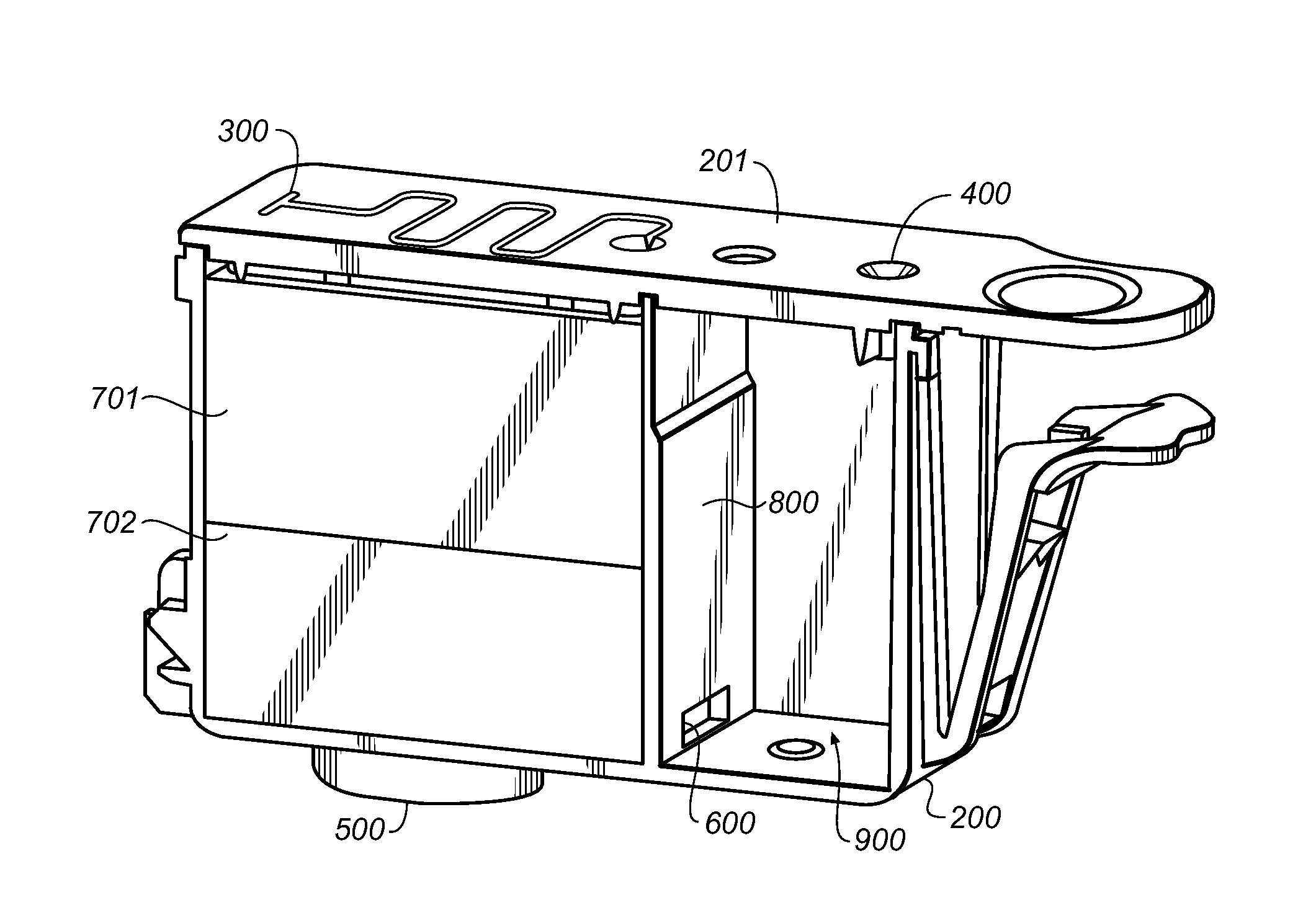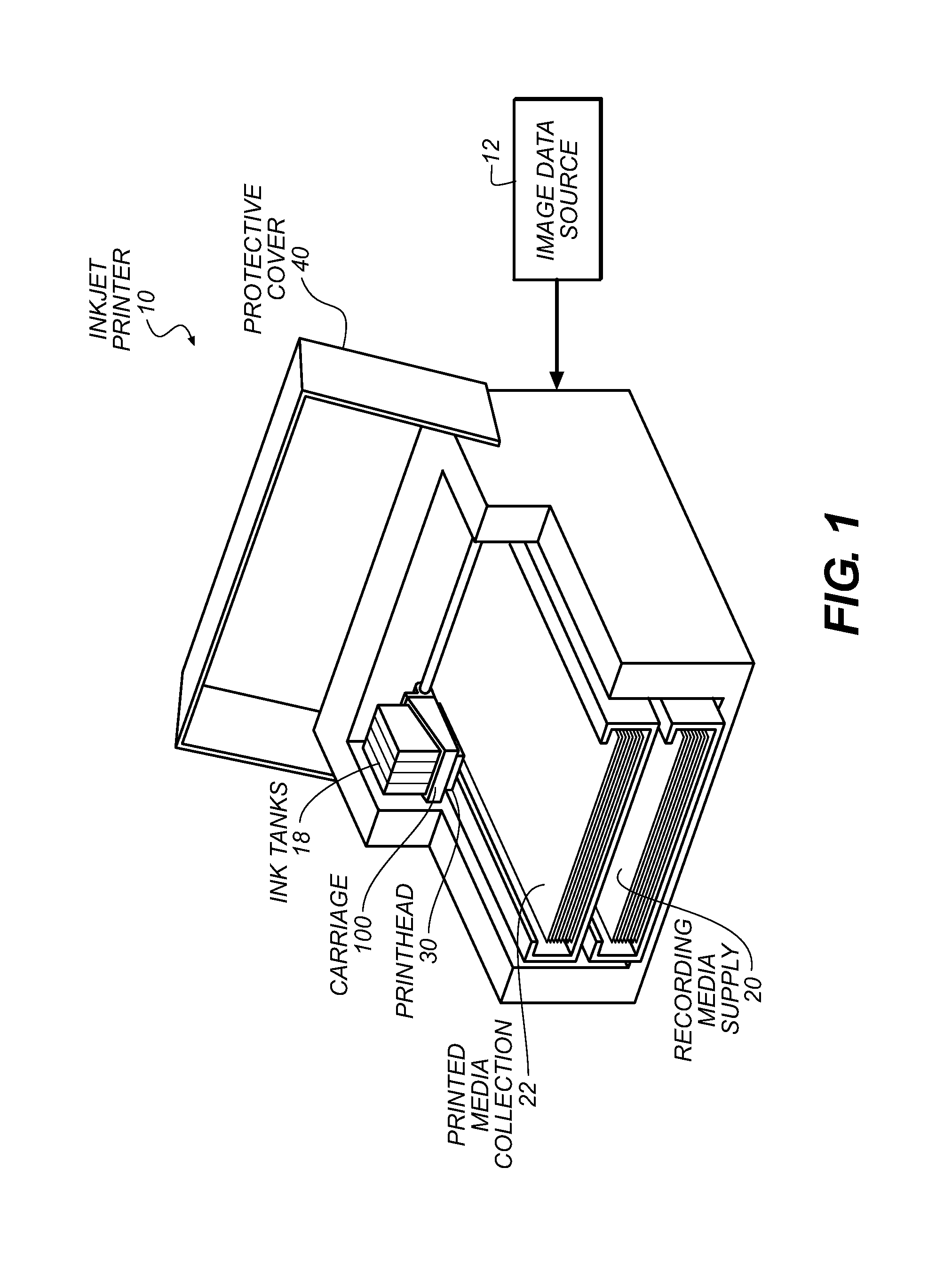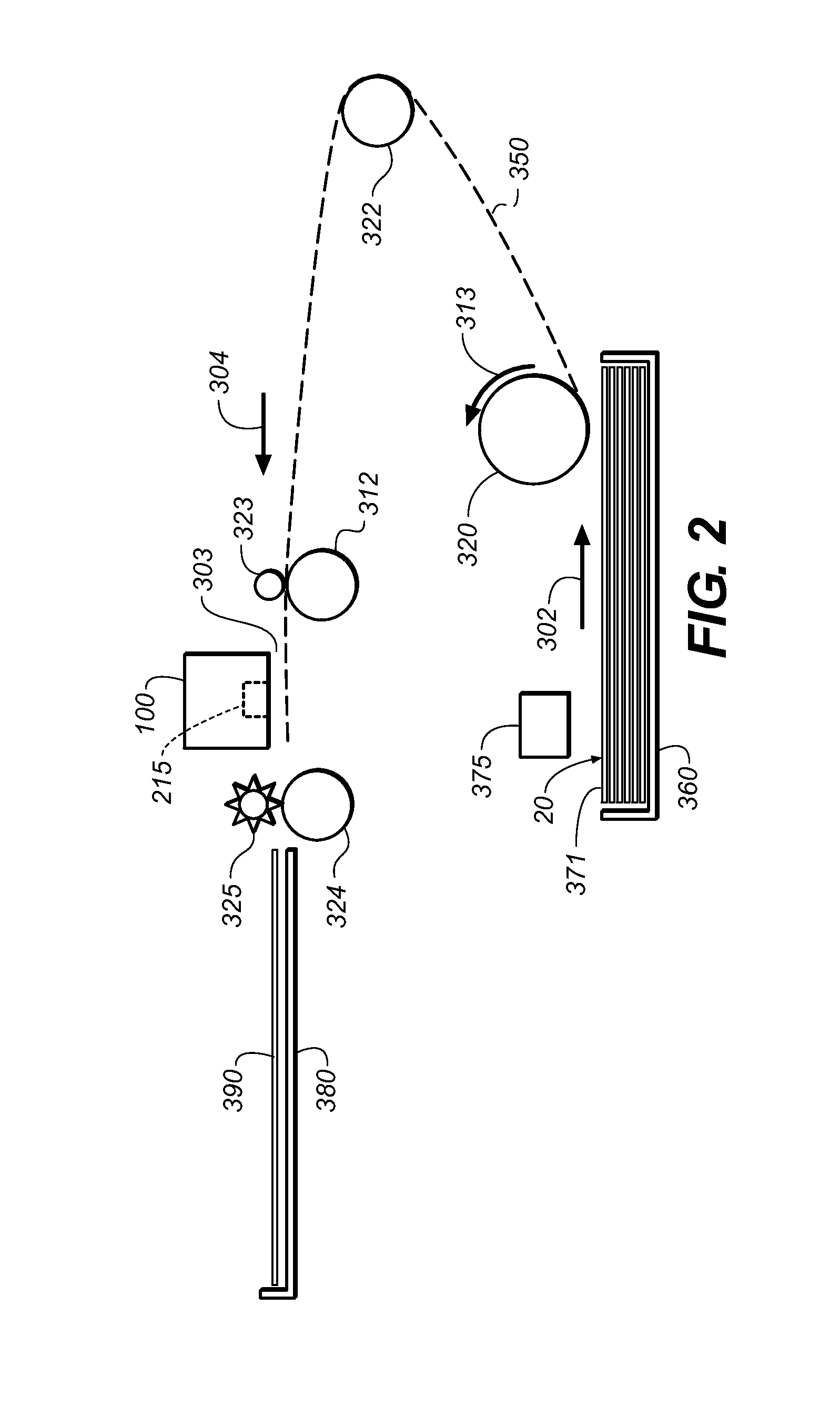Inkjet printing system
a printing system and inkjet technology, applied in printing and other directions, can solve the problems of limited overall system performance of the tank, ink performance limitations, and inability to print in time, and achieve the effect of reducing the amount of ink trapped in the ink tank, good performance, and high print density and text sharpness
- Summary
- Abstract
- Description
- Claims
- Application Information
AI Technical Summary
Benefits of technology
Problems solved by technology
Method used
Image
Examples
example 1
[0080]The following example shows the operating limits of surface tension for inks used in the bubbler tank design. The tanks were composed of a transparent polyethylene material and the inks were designed without pigment such that bubbles internal to the tank could be viewed during operation.
[0081]Ink Tank
[0082]The bubbler ink tank design is shown in FIGS. 3-4. The drain port capillary wick material 501, the bottom capillary material 702, and the upper capillary material 701 were each composed of PET / PP sheath / core fiber felts, with the upper capillary material 701 having the lowest density (0.11 g / cc, corresponding to the largest relative porosity and lowest relative capillarity) and the wick material 501 having the highest density (0.19 g / cc, corresponding to the lowest relative porosity and highest relative capillarity) of the three felts, with the lower capillary material 702 having an intermediate density (0.12 g / cc, corresponding to an intermediate relative porosity and capil...
example 2
[0095]Ink Preparation
Comparative Ink 2C-1
[0096]To prepare Ink 2C-1, 29.0 g of self-dispersed carbon black K4 from Orient Chemical Industries Corporation (13.8 wt % active), 12 g of triethylene glycol, 8 g of glycerol, 2.0 g of water soluble polymer P1 solution (20% active), and 2.8 g potassium carbonate solution (5% active) were added together with distilled water so that the final weight of the ink was 100.0 g. Dispersion K4 is very similar to commercial Orient CW-3 carbon pigment except that the particle size is larger and the amount of surface functional group has been increased to a higher treatment level. The volatile surface functional groups for this dispersion were measured to be 22.1 wt. %. The final ink contained 4.0% carbon 12% triethylene glycol, 8% glycerol, and 0.4% water-soluble polymer P1. The solution was filtered through a 1.2 μm polytetrafluoroethylene filter. The resulting ink had the following physical properties: a surface tension of 45.5 dynes / cm at room tempe...
example 3
[0111]Ink Preparation
[0112]All of the inks in this example were prepared exactly as in Example 2 except that the level of triethylene glycol in each ink was increased to 16%.
Comparative Ink 3C-1
[0113]To prepare Ink 3C-1, 29.0 g of self-dispersed carbon black K4 from Orient Chemical Industries Corporation (13.8 wt % active), 16 g of triethylene glycol, 8 g of glycerol, 2.0 g of water soluble polymer P1 solution (20% active), and 2.8 g potassium carbonate solution (5% active) were added together with distilled water so that the final weight of the ink was 100.0 g. The volatile surface functional groups for this dispersion were measured to be 22.1 wt. %. The final ink contained 4.0% carbon 16% triethylene glycol, 8% glycerol, and 0.4% water-soluble polymer P1. The solution was filtered through a 1.2 μm polytetrafluoroethylene filter. The resulting ink had the following physical properties: a surface tension of 44.3 dynes / cm at room temperature, a viscosity of 2.49 cps at room temperatu...
PUM
 Login to View More
Login to View More Abstract
Description
Claims
Application Information
 Login to View More
Login to View More - R&D
- Intellectual Property
- Life Sciences
- Materials
- Tech Scout
- Unparalleled Data Quality
- Higher Quality Content
- 60% Fewer Hallucinations
Browse by: Latest US Patents, China's latest patents, Technical Efficacy Thesaurus, Application Domain, Technology Topic, Popular Technical Reports.
© 2025 PatSnap. All rights reserved.Legal|Privacy policy|Modern Slavery Act Transparency Statement|Sitemap|About US| Contact US: help@patsnap.com



